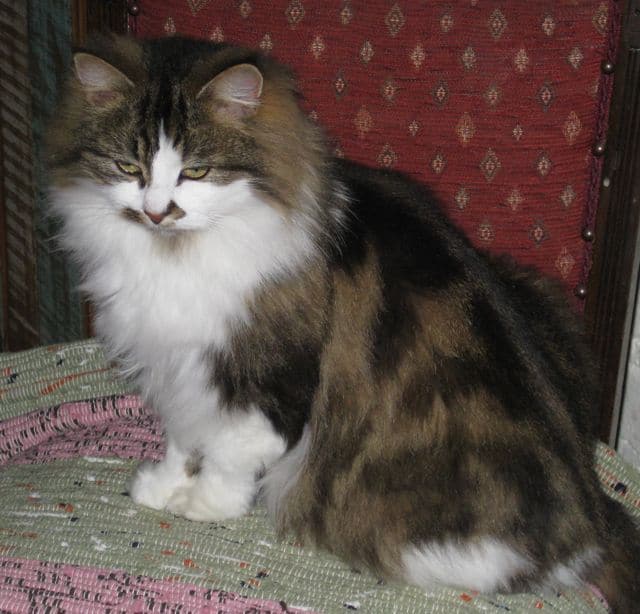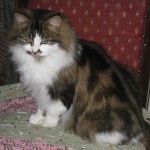Pet Advice Guides for Pet Owners, Sanctuary Life
Feeding indoor cats
The lifestyles of our cats have undergone a change in recent years. More and more cats are being kept indoors. This is fine if the cat likes the lifestyle and many of them, especially as they get older, do enjoy the comfort and safety. For other cats who enjoy hunting and climbing and social interaction with the boy next door, staying in wouldn’t do at all. Timid cats, especially, are often much better suited to being house cats. Delilah in the picture above, loves being inside, she will go out but she is a luxury loving sanctuary resident who prefers soft cushions and heated pads and isn’t at all interested in chasing leaves or having a chat with other cats.
The energy needs of an indoor cat are very different from one who goes outside. With an average territory size of 35 to 100 square metres, she will not roam so far or get so much exercise. It’s best to give a cat kept indoors the run of the house. If you can make an outside fenced ‘patio’ area, so much the better. Many cats love to be out so long as they have the security of a run and it isn’t hard to set up. A nice shed, some wood, fencing wire and a handyman – and there you have it.
Surveys have shown that an indoor cat is likely to groom for 3 to 4 hours a day and sleep up to 18 hours. She will eat 15 or 20 times a day (little and often is preferred by most felines) and she will play for less than an hour. The temperature will be more or less the same, which affects coat shedding. No freezing winters and baking summers for the inside little lady and she will have artificial lighting so the days will be longer – and she can even watch a bit of Tom and Jerry on t.v. when she feels like it.
All these factors need to be taken into account when feeding a cat who stays inside. There will be a 40% more risk of the cat becoming overweight which is detrimental to health and can lead to diabetes and heart disease. Another potential problem is that there will be year round shedding of hair with a likelihood of it being ingested as the cat grooms. Lack of exercise means a slower digestive transit than the guys who are running and leaping and living life on the edge, so watch out for intestinal disorders.
There are several tailor-made nutrional foods especially for indoor cats and whilst we normally like cats to have a variety of food and as much fresh and natural as possible, this is one case when a special diet is beneficial. We have tested Royal Canin indoor cat food and found it to be excellent – it’s certainly palatable and all the cats in our survey loved it. It also keeps them in good condition, so this is one we recommend. There are special diets for adult cats living indoors, including one for long haired cats and another for senior citizens. These are highly digestibly and provide all the nutrients your cat needs without associated problems. Don’t forget to make sure there is plenty of fresh, clean water available at all times. We put the water dish right next to the biscuits and then another one in a different location, near to the sleeping area. Our inside cats (from choice!) will be testing another brand shortly – results coming soon.


